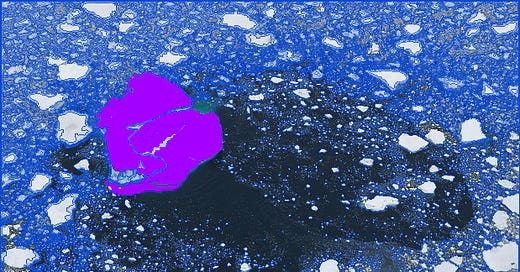The Unabashed “Climate Change” Scam Continues Unabated
Why is there a “Climate Change” Fraud? Follow the Money
Why is there a “Climate Change” Fraud? Follow the Money
The Unabashed “Climate Change” Scam Continues Unabated
According to Oxfam:
“Up to $41 billion in World Bank climate finance —nearly 40 percent of all climate funds disbursed by the Bank over the past seven years— is unaccounted for due to poor record-keeping practices, reveals a new Oxfam report published today ahead of the World Bank and IMF Annual Meetings in Washington D.C.”
“An Oxfam audit of the World Bank’s 2017-2023 climate finance portfolio found that between $24 billion and $41 billion in climate finance went unaccounted for between the time projects were approved and when they closed.”
“There is no clear public record showing where this money went or how it was used, which makes any assessment of its impacts impossible. It also remains unclear whether these funds were even spent on climate-related initiatives intended to help low-and middle-income countries protect people from the impacts of the climate crisis and invest in clean energy.”
“‘The Bank is quick to brag about its climate finance billions —but these numbers are based on what it plans to spend, not on what it actually spends once a project gets rolling,’ said Kate Donald, Head of Oxfam International’s Washington D.C. Office. ‘This is like asking your doctor to assess your diet only by looking at your grocery list, without ever checking what actually ends up in your fridge.’”
“The Bank is the largest multilateral provider of climate finance, accounting for 52 percent of the total flow from all multilateral development banks combined.”[1]
In the meantime we’re told that: “Recent research offers new insights on Antarctic sea ice, which, despite global warming, has increased in overall extent over the past 40 years.”
“Sea ice covers the ocean surrounding Antarctica, forming a key component of the coupled ocean-atmosphere-cryosphere system in southern high latitudes that helps regulate climate, ocean circulation, and marine ecosystems. The extent of Antarctic sea ice varies greatly from year to year, but 40 years of satellite records show a long-term trend. Although some Antarctic regions have experienced reductions in sea ice extent, the overall trend since 1979 shows increased ice.”
“The increase in Antarctic sea ice extent stands in stark contrast to conditions in the Arctic, where sea ice extent has declined significantly—by about 2 million square kilometers, or about 20%, over the past 40 years. Much of the observed loss of Arctic sea ice, which is in general agreement with expectations from climate models, has been attributed to anthropogenic global warming.”
“The trend in Antarctic sea ice, meanwhile, has confounded scientists—most climate models indicate that Antarctic sea ice extent should have decreased over the past several decades.”[2]
[1] https://www.oxfam.org/en/press-releases/41-billion-world-bank-climate-finance-unaccounted-oxfam-finds#:~:text=An%20Oxfam%20audit%20of%20the,approved%20and%20when%20they%20closed.
https://eos.org/science-updates/new-perspectives-on-the-enigma-of-expanding-antarctic-sea-ice




